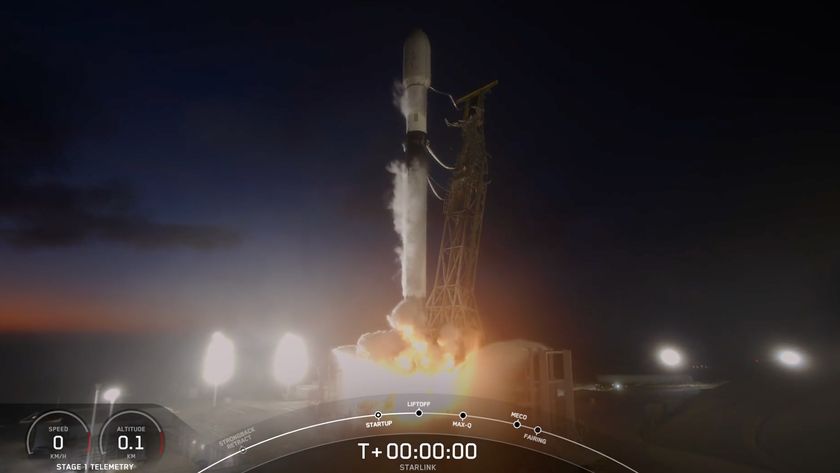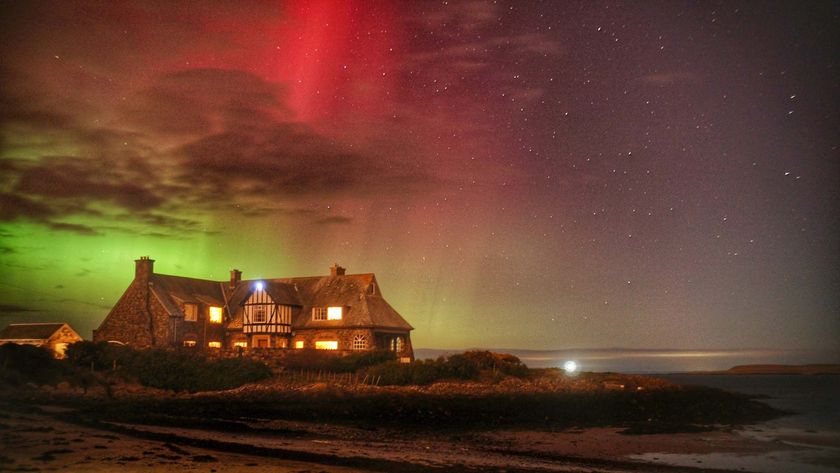Skylab: How NASA's First Space Station Worked (Infographic)

After the final Apollo moon landing, NASA repurposed surplus Apollo and Saturn V rocket hardware for the Skylab space station program. Nine astronauts inhabited Skylab for a total of 171 days between May 1973 and November 1974. Skylab itself fell back to Earth on June 11, 1979.
Until the mid-20th century, space scientists imagined that a space station would probably take the form of a giant wheel, rotating slowly to generate artificial gravity. By the 1960s, a more practical idea was to launch a rocket stage into orbit and drain its remaining fuel into space. Astronauts could install life-support systems and stock the station with food and water to sustain them for months.
Skylab's overall length was 86.3 feet (26.3 meters) without the Apollo Command and Service Module attached. The workshop’s diameter was 21.67 feet (6.6 meters). [Photos: Skylab, the 1st U.S. Space Station]
As the design for Skylab progressed, engineers realized that the station would not be required to burn its own fuel to reach orbit and then be outfitted in space for habitation. Instead, the workshop could be launched already stocked with food, air, water and living accommodations.
Space Station Evolution: 6 Amazing Orbital Outposts
Unlike an Apollo moon mission, where all components were launched on a single booster rocket, Skylab would require multiple launches. First, the Skylab workshop itself was launched into orbit on May 14, 1973. Three crews of three Apollo astronauts would be launched on separate Saturn 1B rockets.
Nine astronauts were selected to inhabit Skylab. The Skylab 2 crew of Joseph Kerwin, Charles Conrad and Paul Weitz launched on May 25, 1973, spending 28 days aboard Skylab. The Skylab 3 crew of Owen Garriott, Jack Lousma and Alan Bean launched on July 28, 1973, spending 59 days aboard. The Skylab 4 crew of Gerald Carr, Edward Gibson and William Pogue lauched on Nov. 16, 1973, spending 84 days aboard.
During launch, malfunctions crippled Skylab's capacity to generate electrical power and prevent overheating. One of the main solar panels was torn away completely. The remaining solar panel was jammed by fragments of a meteoroid shield that had also been torn away.
With the meteoroid shield gone, the lab was unprotected from the sun's heat. The exterior quickly heated up to about 200 degrees Fahrenheit (93 degrees Celsius) higher than expected. Plans were made to salvage the mission. The first crew would deploy a parasol, called the Skylab sun shade, through an airlock. A later crew would deploy a more effective sunshade. Another problem was lack of electricity due to the jammed solar panel.
Skylab 2 crew member Paul Weitz stood in the command module hatch to use cutters attached to a long pole, but he could not cut the aluminum strap holding down the panel. NASA scrambled to prepare another plan to free the panel. A few days later, Weitz and Charles Conrad succeeded in freeing the panel during a spacewalk.
The living area of Skylab was originally the fuel tank of the Saturn SIV-B rocket stage. Compared to the space capsules previously used by U.S. astronauts, Skylab's habitable volume was enormous: 12,750 cubic feet (361 cubic meters). The Apollo command module had only 218 cubic feet (6.17 cubic meters) of living space.
Skylab's heated serving tray was an improvement over the Apollo program's meals in plastic bags that had to be reconstituted with injected hot water.
Following the Skylab program, NASA's efforts went into getting the new space shuttle off the ground. By 1978, the abandoned Skylab was falling out of orbit because solar heating had expanded Earth’s atmosphere, increasing the friction as Skylab orbited and dragging it down.
NASA hoped that an early space shuttle launch could deliver a reboost module to Skylab in time to blast it into a higher orbit. Unfortunately, Skylab plummeted to Earth in 1979, long before the shuttle was ready for launch.
- Photos: Skylab, the 1st U.S. Space Station
- Skylab's Remains: NASA Space Station Debris in Australia (Photos)
- Inside the International Space Station - The Video Show
- Space Station Evolution: 6 Amazing Orbital Outposts
Follow us @Spacedotcom, Facebook and Google+.
Join our Space Forums to keep talking space on the latest missions, night sky and more! And if you have a news tip, correction or comment, let us know at: community@space.com.
Get the Space.com Newsletter
Breaking space news, the latest updates on rocket launches, skywatching events and more!

Karl's association with Space.com goes back to 2000, when he was hired to produce interactive Flash graphics. From 2010 to 2016, Karl worked as an infographics specialist across all editorial properties of Purch (formerly known as TechMediaNetwork). Before joining Space.com, Karl spent 11 years at the New York headquarters of The Associated Press, creating news graphics for use around the world in newspapers and on the web. He has a degree in graphic design from Louisiana State University and now works as a freelance graphic designer in New York City.


